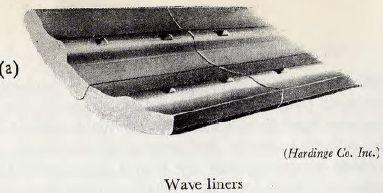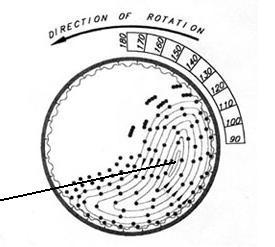Coatings do much more than just protect the casing of a mill with current research aimed at optimizing liner design and reducing grinding costs. Barely introduced ball mills, tubular mills and rod mills in mineral processing in the late 19th century, it was possible to determine that a continuous operation with abrasive feed leads to erosion of the mill’s hull. The earliest cladding designs were gross, to say the least. Individual panels were supported by wooden or metal wedges and, unsurprisingly, mill liners from this era required frequent maintenance and replacement. Use of the ball mill liner is essential there.
Story of the Beginning
A fascinating perspective on historical practice appeared in a paper presented to the Chemical, Metallurgical and Mining Society of South Africa in 1907. The author, Ralph Stokes, described the coatings that were then used in the Waihi gold mines in New Zealand, where the ore was first fractured by hammer mills, with subsequent grinding using tubular mills. The hardness of the mineral, Stokes explained in his presentation, wreaked havoc on the coatings by loading the mills with 5½ tons of flint as the grinding medium.

As they were delivered two years earlier, the mills were designed to be clad using rectangular cut flint or stone blocks. However, the mine had struggled to source the material locally, and the site’s general superintendent, HP Barry, had invented a replacement system that allowed the use of irregular rock fragments.
The “home-made” linings consisted of cast iron racks, 18½ “high, 15½” wide and 3½ “deep, divided into four or six compartments in which pieces of quartzite could be laminated using a mortar based on cement reinforced with fragments of flint from the mills. Among the advantages of this system was the speed with which each section could be replaced when worn or if a section fell during operation. However, the cost of the liners was significant, Stokes said, referring to mill running costs at 1s 2d per tonne of sand, with flint and liners accounting for half of this. The rest presumably took charge of the energy input to rotate the mill. For mere interest, that milling cost is converted to the equivalent of US $ 7.20 per ton in May 2010 dollars.
Present Day Value
Returning quickly to the present, and in a paper presented at the Comminution 2010 conference in Cape Town in April, Johan Dahner and Alfred van den Bosch of Magotteaux reported on their impressions of the divide between energy, grinding media and coatings in grinding operations ball both primary and secondary. When using an optimized coating design, he says, the grinding media is responsible for more than 57% of the total cost of grinding, the energy of 25.5% and the coating of around 17% in primary grinding. For secondary grinding, the relative proportions are 59%, 33% and 8% respectively, although in none of the cases were the effective costs of grinding specified.
What is clear, however, is that although the proportion of total costs incurred for the use of energy has fallen over the past 100 years, and the costs of grinding media have increased in relative terms, coatings still constitute an important cost item. What’s more, Dahner and van den Bosch indicated that a mill that has been equipped with an inappropriate liner can cost considerably more to operate than a comparable unit with a liner that has been optimized for the specific job required, taking into account the type ore, tonnage, mill geometry and other factors.
